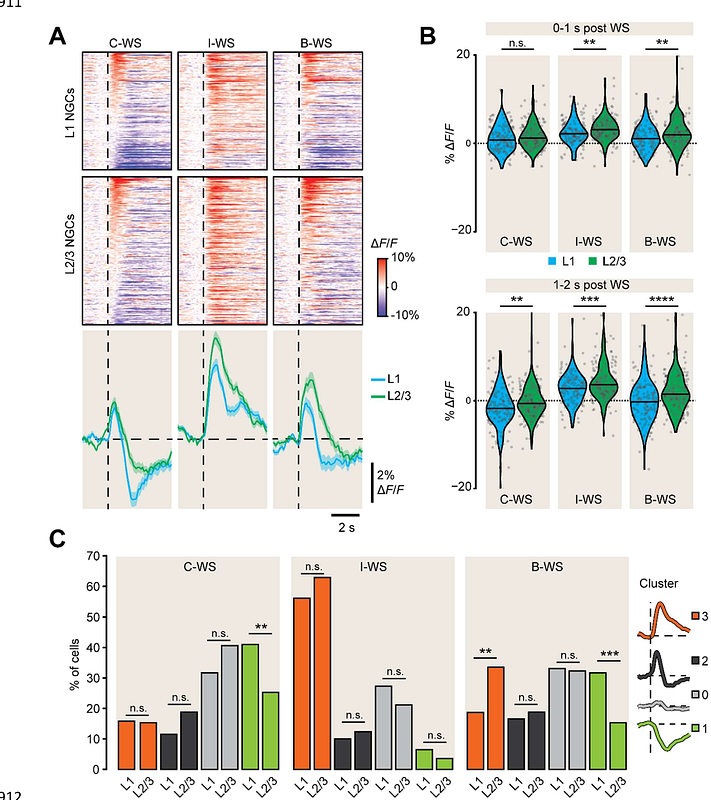Neurogliaform cells mediate interhemispheric modulation of sensory-evoked activity in cortical pyramidal neurons

Neurogliaform cells mediate interhemispheric modulation of sensory-evoked activity in cortical pyramidal neurons
Markopoulos, F.; Chrereau, R.; Brandalise, F.; Chippalkatti, V.; Prados, J.; Dayer, A.; Holtmaat, A.
AbstractIntegration of bilateral sensory inputs requires effective communication between brain hemispheres. This interhemispheric communication is essential for sensory perception and involves reciprocal connections between homotopic sensory areas. A key role in this process is attributed to interhemispheric inhibition which, owing to its long-lasting form, is posited to operate largely through neurogliaform cells (NGCs). However, direct evidence on the role of NGCs in interhemispheric inhibition is missing. Here we show that NGCs in the mouse barrel cortex (BC) are engaged by interhemispheric callosal projections to modulate pyramidal neuron (PN) activity and sensory perception. Using optogenetics, ex vivo whole-cell recordings, and in vivo calcium imaging, we found that layer 1 and layer 2/3 (L1-3) NGCs are strongly activated by the callosal and suppressed by the thalamocortical pathway, suggesting that NGCs encode ipsilateral rather than contralateral whisker stimuli. We also found that direct stimulation of L1-3 NGCs modulates whisker-evoked activity in L2/3 and L5b PNs, and increases the perceptual threshold in a whisker-deflection detection task. Furthermore, these effects were recapitulated by direct stimulation of callosal projections and deflection of the ipsilateral whiskers respectively, suggesting that the effect of the callosal pathway on sensory perception is mediated by NGCs. Our results not only prove that NGCs mediate interhemispheric inhibition, but also demonstrate their role in sensory perception via modulation of the main units involved in cortical input and output.